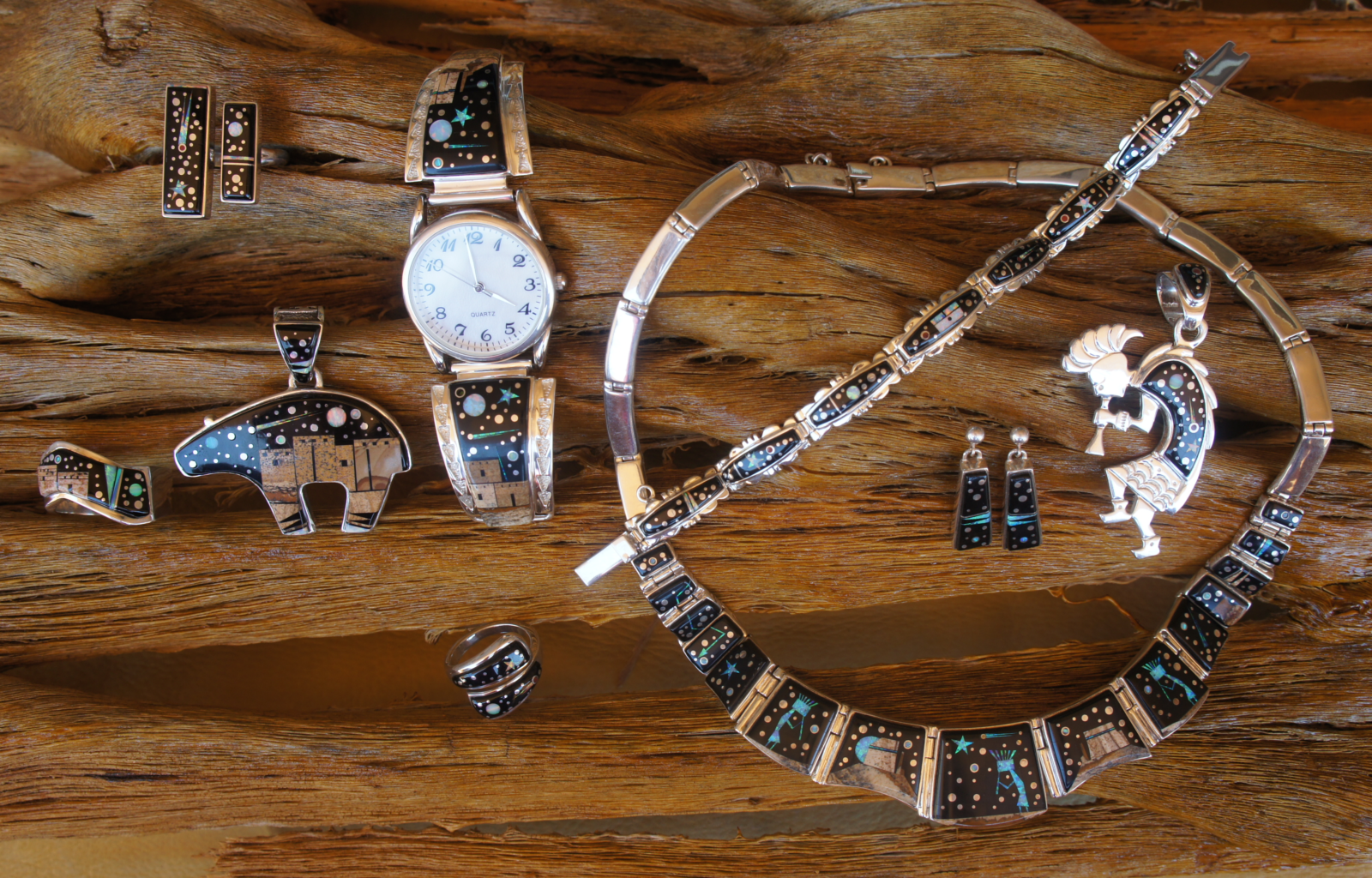Uncategorized
Inlay Artwork
Inlay Jewelry
Inlay jewelry began with the Zuni Pueblo Indians in the 1930s and The Navajo began inlay work in the 1960s. Inlay involves hand grinding each stone to fit snugly against the other. Channel inlay is generally where stones are set against a channel made of silver or gold. This is known as silver or gold channel inlay. Of the 2 types mentioned the hardest is by far stone against stone. It requires a very good eye and great precision to fit each stone snugly against the next without leaving gaps between the stones. Silver channel inlay is also very precise and still difficult to do. The old timers used strictly hand tools but nowadays they use grinding and polishing wheels to do their work, which allows them to use a wider variety of stones that make their work even more beautiful. As each stone is ground it is glued in place using industrial adhesive. In the 1960s renowned artists like Richard Begay, Charles Loloma and Preston Monongye began working in inlay using a variety of stone, shell, ivory and even wood to give them a multitude of colors. They were the first to work in 14K and 18K gold giving it a contemporary look but keeping their traditional flair. The Navajo have since refined their techniques by even doing what is called “micro inlay”. This involves very small cuts of stone or shell and making a design or picture when finished. These pieces can easily involve 300 or mores cuts to complete. We hope this has given you a better understanding of Native American jewelry.

